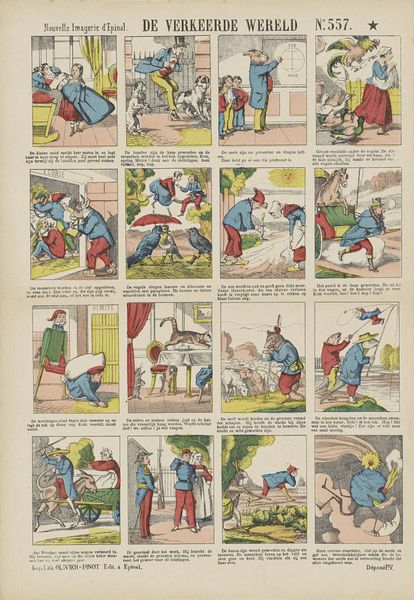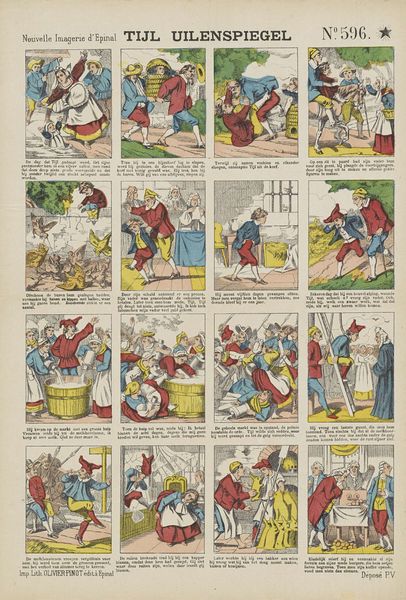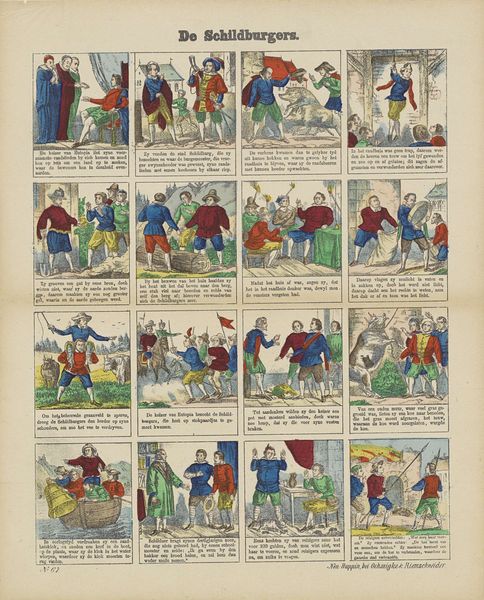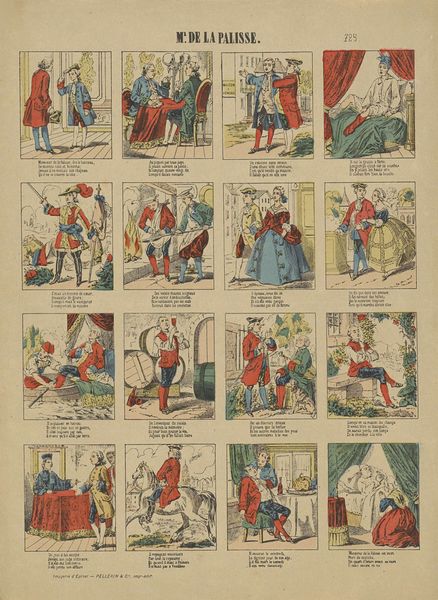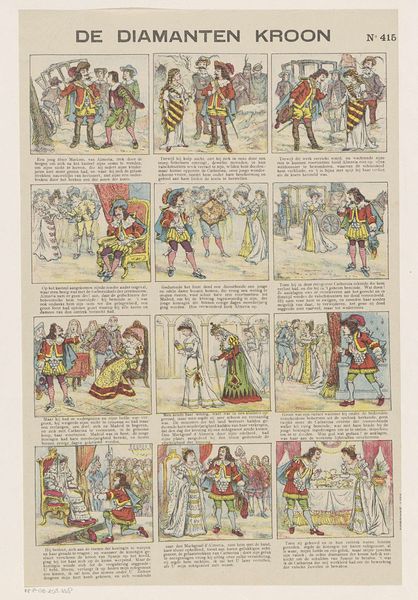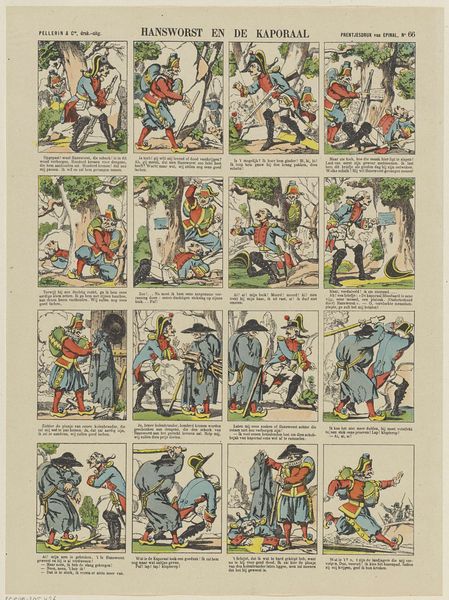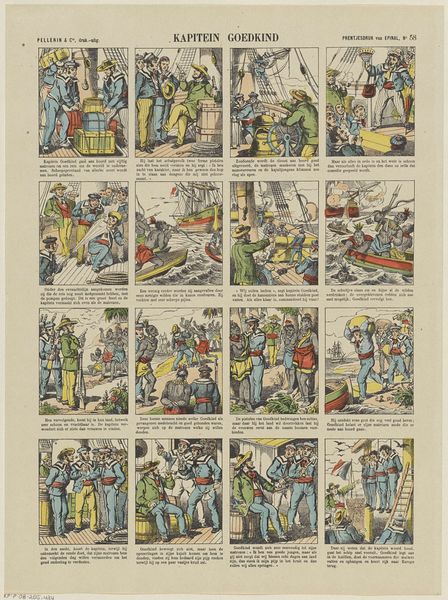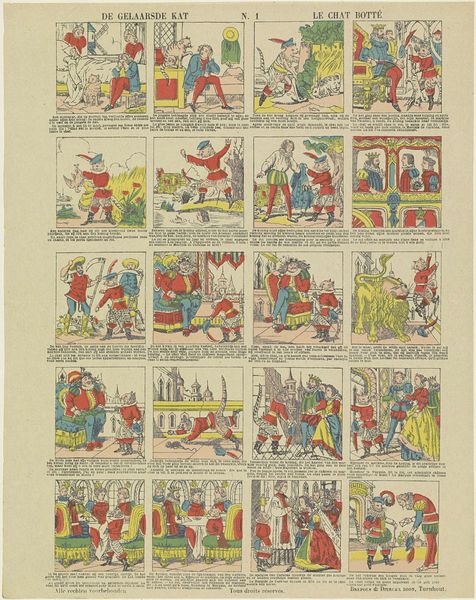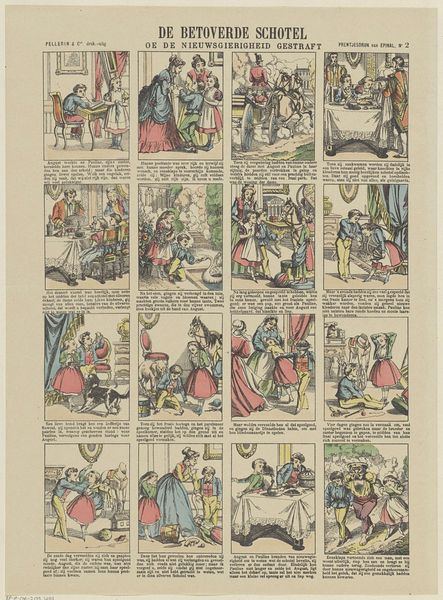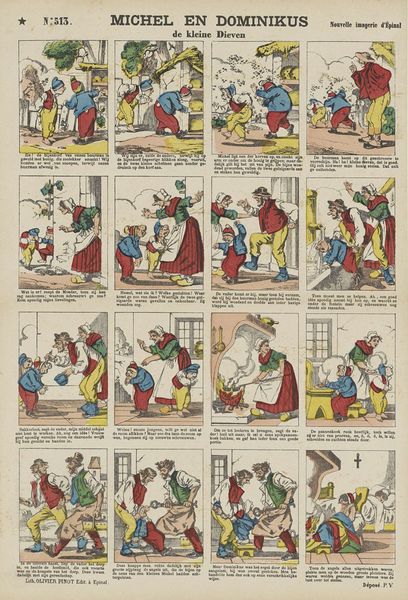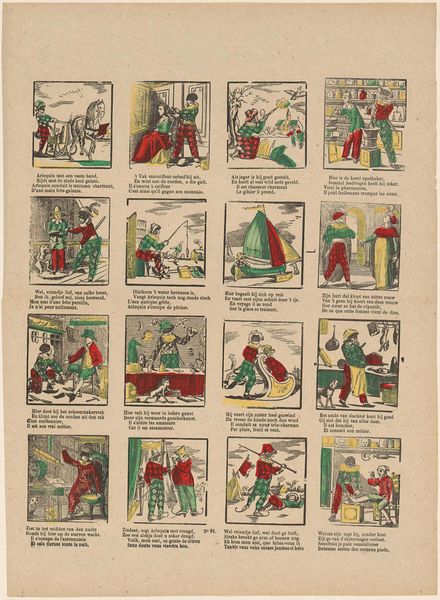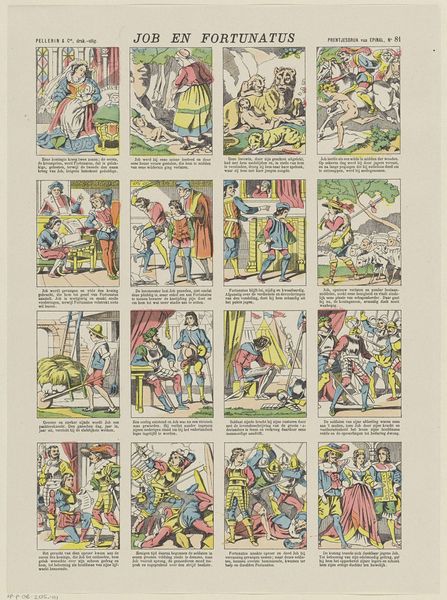
graphic-art, lithograph, print
#
graphic-art
#
comic strip sketch
#
aged paper
#
narrative-art
#
lithograph
# print
#
sketch book
#
personal sketchbook
#
sketchwork
#
comic
#
ink colored
#
pen work
#
sketchbook drawing
#
history-painting
#
storyboard and sketchbook work
#
sketchbook art
Dimensions: height 409 mm, width 280 mm
Copyright: Rijks Museum: Open Domain
Curator: This print, dating from 1874 to 1888, presents the story of William Tell in a series of vignettes. The piece is entitled "Geschiedenis van Willem Tell," created as a lithograph. Editor: My first impression is that this has a storybook charm. It's very graphic, almost like a prototype comic strip. The colors are bright, but on aged paper, so it gives a sort of old-timey feel. Curator: It’s intriguing how this work renders history as a graphic narrative, turning Tell, a figure often regarded as a symbol of resistance against authority, into a proto-comic hero. Editor: Exactly! You can see the seeds of the modern graphic novel in pieces like this. What sociopolitical climate fostered the comic strip as an acceptable venue for history painting? Curator: Considering the timing, the late 19th century witnessed the rise of mass media and illustrated publications. Such accessible media potentially allowed for the shaping of public opinion, and definitely influenced societal narratives. Editor: Absolutely, this makes me think about national identity and its construction through popular imagery. Here, William Tell isn't just a historical figure, he becomes a symbol of Swiss virtue circulated widely through accessible prints. I mean, consider the class implications as well – who had access to oil painting versus something like this? Curator: The repetitive visual language across the panels does flatten Tell's struggle into an easy to understand story. Do we lose some historical nuance? Certainly, we must interrogate how such simplified portrayals contribute to cultural memory. Editor: I do wonder about the intent. It's also clear how each frame contributes to an overall message of liberation against an oppressive state. So how are we, as observers and descendants of various cultural movements, positioned by its simplified perspective? Curator: Examining the print makes me question art’s role in constructing collective memory. The "Story of William Tell," as a cultural artifact, acts as an invitation to delve deeper into not only history, but our understanding of cultural values. Editor: For me, viewing it as an artifact of printed mass media encourages considering art as a participatory venue within society. It's a historical record, certainly, but one to consider how it has actively constructed the way people engage with storytelling.
Comments
No comments
Be the first to comment and join the conversation on the ultimate creative platform.
